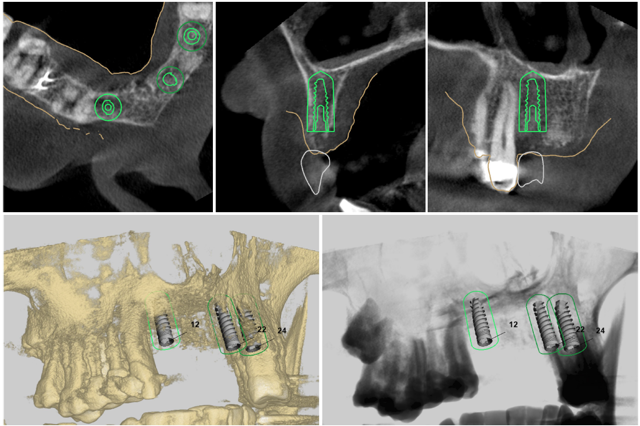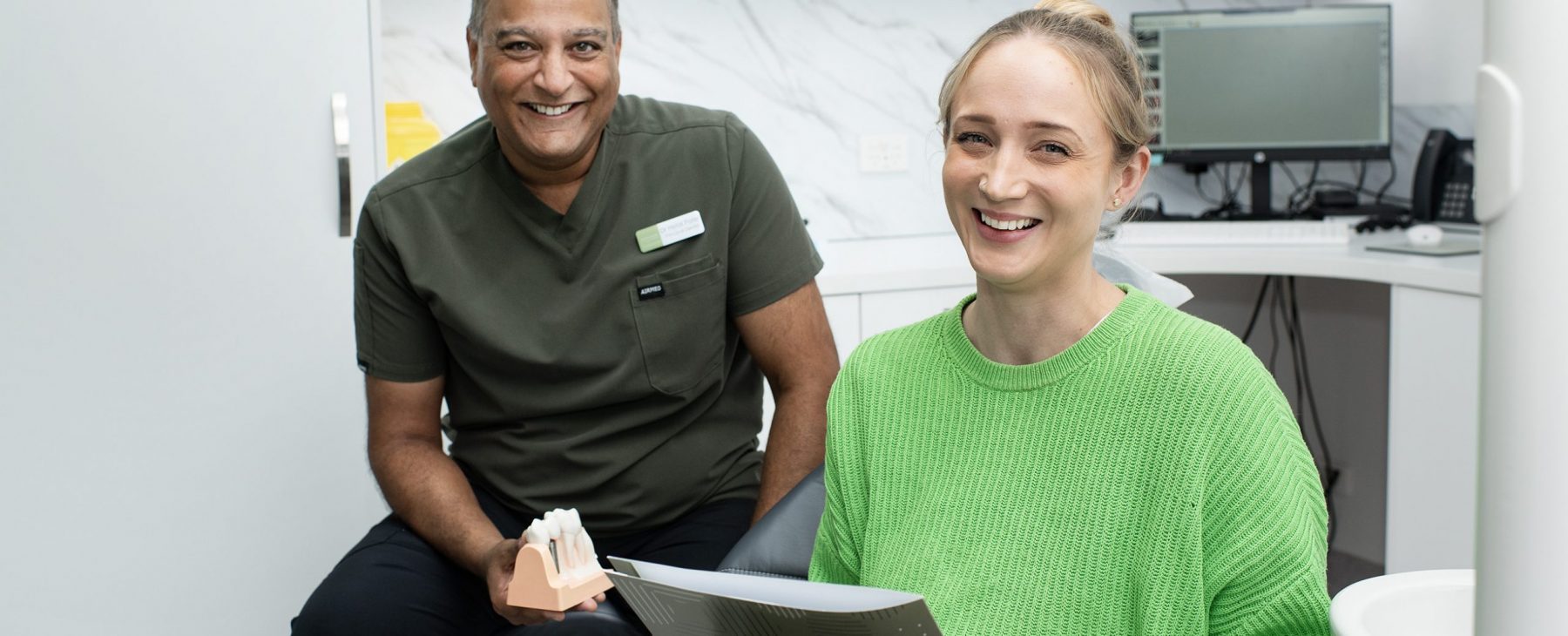
Dental implants are amazingly natural looking replacements that feel as strong and comfortable as your own teeth. As well as restoring your normal appearance, dental implants make eating and speaking much easier than dentures.
Dental implants are anchored permanently into the jaw, replacing the tooth’s own root – just like natural teeth. The implant itself is a titanium post inserted into the gum. Left in place for two to eight months, the bone around the implant gradually grows and bonds with the implant, holding it securely in place.
Once in position, an implant can hold a single replacement tooth, a bridge or a denture with several replacement teeth, which means you can enjoy an attractive and natural looking smile once more.
Single Implants
Dental implants are small rod-like posts that act as a base for replacement teeth. They are placed into the jawbone and act like roots in that they support the tooth, denture or bridge.
The dental implant screw fits into the bone and has a clip (abutment) that the tooth (crown) fits on to. Titanium is the usual material that implants are made of, this is because Titanium has no ill effect on the human body and bonds readily with the new bone, which penetrates into the titanium surface. The implants should last a lifetime if you look after them and maintain good oral hygiene.
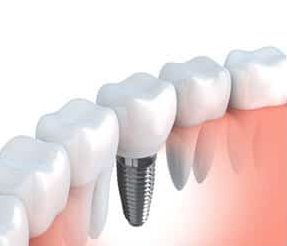
Multiple Implants
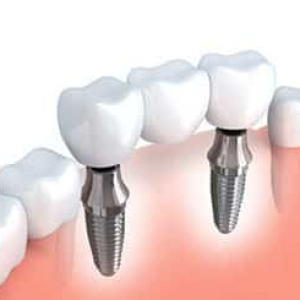
Dental implants are small rod-like posts that act as a base for replacement teeth. They are placed into the jawbone and act like roots in that they support the tooth, denture or bridge.
In all surgical dentistry treatments, such as dental implants, you will need to have a consultation with the dentist to determine the best option for your particular circumstance.
The dental implant screw fits into the bone and has a clip (abutment) that the tooth (crown) fits on to. Titanium is the usual material that implants are made of, this is because Titanium has no ill effect on the human body and bonds readily with the new bone, which penetrates into the titanium surface. The implants should last a lifetime if you look after them and maintain good oral hygiene.
Implant Retained Dentures
For a cost-effective way of replacing many missing teeth, dentures can be held securely in place with implants, providing a great improvement from traditional removable dentures.
✔ No need for denture adhesives, pastes, sticky gum or powders.
✔ Implants help to maintain your facial structures by preserving the remaining bone in your jaws.
✔ Minimises wrinkles around the mouth by restoring lost lip-support
✔ Markedly improves your ability to chew – you can eat whatever you want and enjoy your food again.
✔ Secure and comfortable – no more embarrassing moments caused by loose dentures!
A lower denture may only need two conventional implants to give a completely life-changing transformation to your ability to chew foods, and smile with confidence
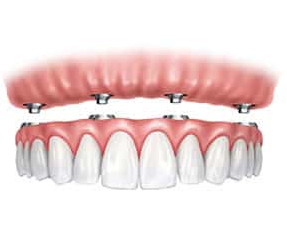
Teeth In A Day
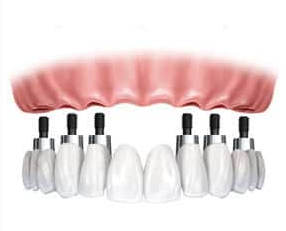
The All-on-6 dental implant technique is revolutionary procedure allowing patients to attend the surgery in the morning and leave with a fully fixed temporary set of teeth in the afternoon!
The All-on-6 concept was developed to enable the dental implant dentist to minimise the number of implants required to restore an entire arch (Jaw) of teeth and to enable the temporary restoration to be fitted to the implants on the very same day. Traditional implant techniques require 6-12 implants (which costs significantly more) to restore a jaw and also a period of extended healing time where the bridge cannot be fixed.
The scientific idea behind the All-on-6 implant technique is that the two front implants are placed straight into the front of the jawbone parallel to the previously existing teeth whilst the two implants placed at the back of the jaw are angled at about 30 to 45 degrees in the bone compared to original root positions.
This method enables the implants to provide a firm overall support and also evenly spreads the chewing forces transmitted from the denture or bridge to the jawbone.
Computer-Guided Dental Implants
This new technology is the most advanced method in placing Dental Implants. The computer program will utilise x-ray images, cone-beam CT images, and impressions into a 3D model of your jaw. We will then be able to visualise the placement of Dental Implants and determine their optimum position with a high degree of accuracy that is customised uniquely for every patient. A fabricated surgical guide will enable the dentist to place the implant precisely in the location at the angulation and depth according to the plan.
What this means to you is that a computer-guided dental implant can be completed in the shortest time possible, so you can get on with life, and eat the food that you always love, and smile with confidence.
